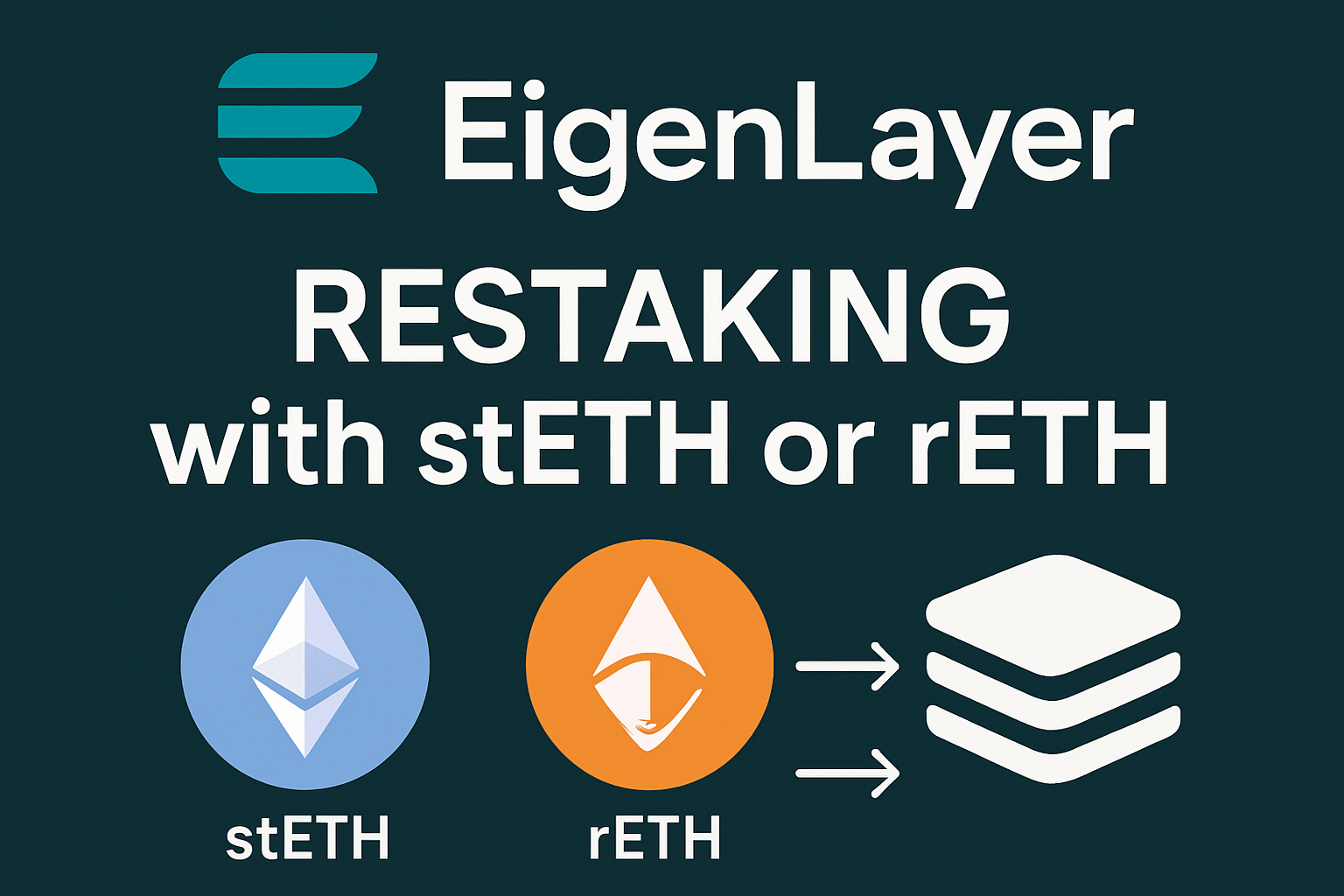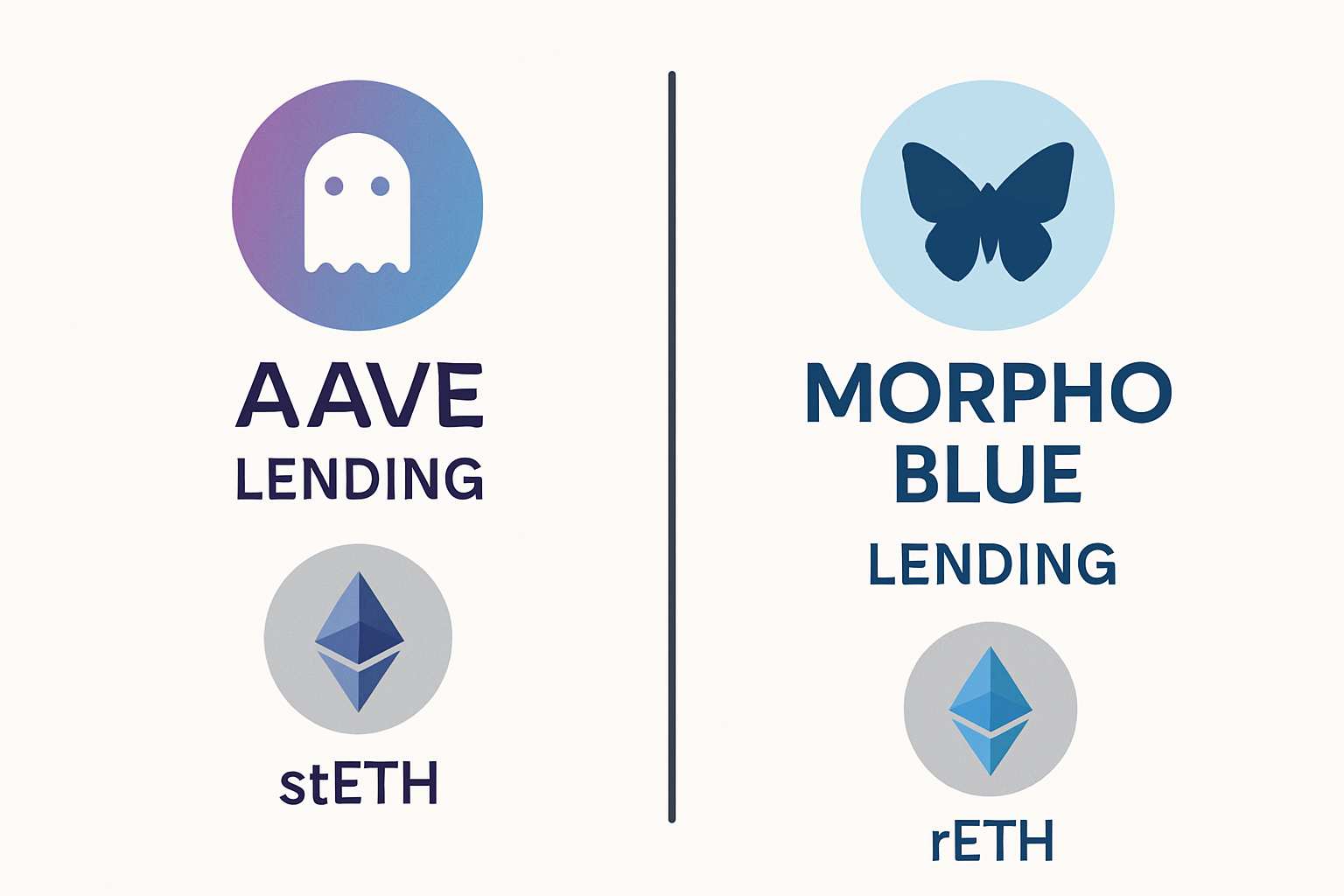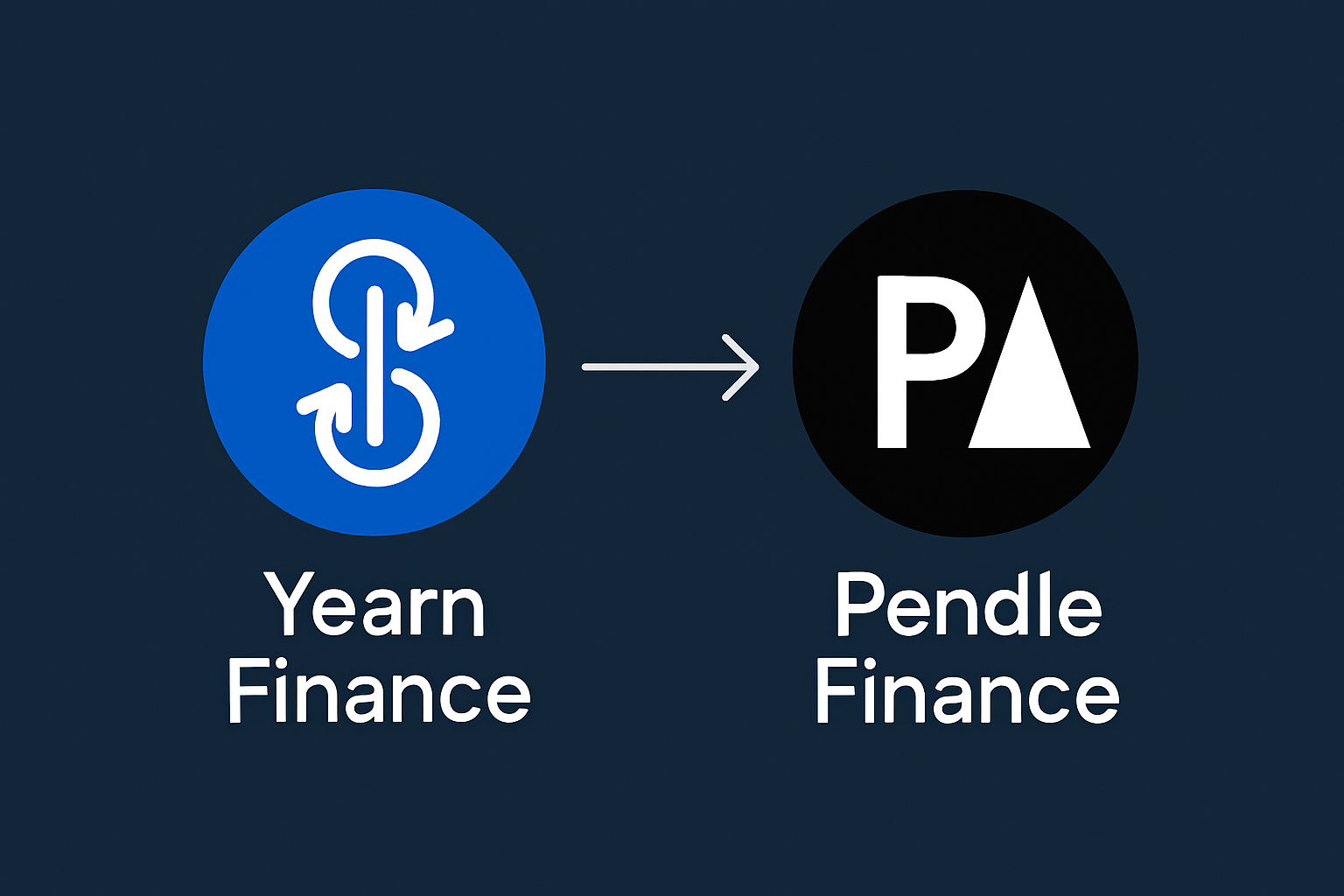
Yield stacking with liquid staking tokens (LSTs) is rewriting the DeFi playbook in 2025. As Ethereum holds strong at $3,974.04, savvy investors are pushing beyond basic staking, leveraging new protocols and composable assets to maximize returns while carefully managing risk. The days of single-digit staking yields are over for those who know how to stack, layering rewards across multiple platforms and strategies. Let’s break down the most advanced methods for boosting DeFi yield with LSTs right now.
Restake LSTs via EigenLayer for Multi-Layer Yield
Restaking is the headline innovation of 2025. By depositing your LSTs (like stETH or rETH) into EigenLayer, you unlock a second layer of rewards. Here’s how it works: your assets continue to earn the base staking yield (currently averaging 2.5% for ETH), while simultaneously being deployed to secure additional DeFi services and protocols. This dual-purpose approach is a game-changer for capital efficiency.
Platforms such as Ether. fi have streamlined the process, automating restaking flows so you can stack rewards with minimal effort. The result? Multi-layered APY that can outpace traditional staking by a significant margin, though it comes with extra smart contract risk. For a deeper dive into how liquid staking tokens enable effortless yield stacking across DeFi, check out our detailed guide at this link.
Deploy LSTs in DeFi Lending Protocols for Stacked Returns
Don’t let your LSTs sit idle after restaking. The next step in yield stacking is to deploy these tokens into DeFi lending markets. By supplying stETH, rETH, or similar assets to platforms like Aave or Morpho Blue, you earn lending interest on top of your staking and restaking rewards. In 2025, this triple-layer approach is fueling some of the highest sustainable yields in the market.
Lending protocols are racing to support more LSTs, reflecting growing demand for composable yield strategies. Just remember: stacking yields means stacking risks. Each protocol you add introduces another layer of smart contract exposure. Manage position sizes and stay on top of security audits to keep your stack resilient. For a practical walkthrough on maximizing LST returns in DeFi lending, see our in-depth guide.
Integrate LSTs into Automated Yield Aggregators for Optimized APY
The final piece of the 2025 yield stacking puzzle is automation. Yield aggregators, think Yearn, Sommelier, or new LST-focused platforms, dynamically allocate your assets across the highest-yielding strategies. Plug your LSTs into these smart contracts, and they’ll rebalance between restaking, lending, and liquidity pools to chase the best APY in real time.
This hands-off approach is perfect for investors who want to maximize returns without micromanaging every move. Aggregators also help mitigate risk by spreading assets across multiple protocols and adapting to changing market conditions. For more on how automated strategies can supercharge your liquid staking APY, explore this resource.
Ethereum (ETH) Price Prediction & Staking Yield Outlook: 2026-2031
Based on market context as of October 2025; includes minimum, average, and maximum price forecasts for ETH, factoring in staking, liquid staking, and DeFi innovations.
| Year | Minimum Price (Bearish) | Average Price (Base Case) | Maximum Price (Bullish) | YoY % Change (Avg) | Key Scenario Insights |
|---|---|---|---|---|---|
| 2026 | $3,200 | $4,350 | $5,800 | +9.5% | Post-ETF volatility; LST adoption grows, but macro uncertainty persists |
| 2027 | $3,500 | $5,100 | $7,300 | +17.2% | DeFi restaking matures; improved regulatory clarity; ETH L2s expand |
| 2028 | $3,900 | $5,900 | $9,400 | +15.7% | Mainstream DeFi onboarding; ETH upgrades increase scalability |
| 2029 | $4,200 | $6,750 | $11,200 | +14.4% | Mass adoption phase; new institutional DeFi products launch |
| 2030 | $4,800 | $7,600 | $13,500 | +12.6% | Competition from alternative L1s; ETH remains DeFi leader |
| 2031 | $5,200 | $8,350 | $15,800 | +9.9% | Global regulation stabilizes; ETH as DeFi ‘reserve asset’ |
Price Prediction Summary
Ethereum’s price outlook for 2026-2031 is positive, with steady growth driven by widespread adoption of liquid staking, yield stacking, and DeFi innovations. While the base case sees ETH averaging above $8,000 by 2031, potential market risks and competition could cause volatility. Bullish scenarios envision ETH reaching beyond $15,000 if DeFi and institutional participation accelerate, while bearish cases consider macro shocks or regulatory headwinds.
Key Factors Affecting Ethereum Price
- Widespread adoption of liquid staking and restaking protocols (e.g., EigenLayer, Lido, Rocket Pool)
- Growth of DeFi yield stacking strategies, increasing ETH utility and demand
- Ongoing Ethereum protocol upgrades (scalability, security, sharding)
- Evolution of global crypto regulations and institutional participation
- Competition from other smart contract platforms (Solana, Avalanche, etc.)
- Market cycles, including potential bull/bear phases and macroeconomic events
- Smart contract risks and security incidents affecting user confidence
Disclaimer: Cryptocurrency price predictions are speculative and based on current market analysis.
Actual prices may vary significantly due to market volatility, regulatory changes, and other factors.
Always do your own research before making investment decisions.
As yield stacking with liquid staking tokens (LSTs) matures, the competitive edge goes to those who combine strategic protocol selection with robust risk management. With Ethereum (ETH) trading at $3,974.04 and staking yields holding near 2.5%, the real alpha is captured by compounding opportunities across restaking, lending, and automated optimization. Here’s how each advanced strategy works in practice, and what you need to watch for in 2025.

Restake LSTs via EigenLayer for Multi-Layer Yield
Restaking has become the go-to move for yield maximizers. By depositing LSTs into EigenLayer, you’re not just earning the base staking reward; you’re also securing new decentralized services and earning additional protocol incentives. This multi-layer yield is a breakthrough for capital efficiency, but it’s not without risk. Each new layer amplifies your exposure to smart contract vulnerabilities and protocol-specific risks. Monitoring EigenLayer’s security updates and staying nimble with your allocations is critical in 2025’s fast-moving market.
Deploy LSTs in DeFi Lending Protocols for Stacked Returns
After restaking, savvy investors move their LSTs into lending protocols. Platforms like Aave and Morpho Blue let you supply stETH or rETH as collateral, earning lending interest while still collecting staking and restaking rewards. This triple-yield approach is fueling sustainable APYs well above the market average. However, it’s essential to track protocol health metrics and collateralization ratios, liquidation risks and variable interest rates can eat into your gains if left unchecked. For a hands-on guide to optimizing stacked returns, check out our walkthrough.
Top 3 Advanced Yield Stacking Strategies with LSTs (2025)
-

Restake LSTs via EigenLayer for Multi-Layer Yield: Leverage platforms like EigenLayer and Ether.fi to restake your liquid staking tokens (e.g., stETH, rETH). This approach lets you earn base staking rewards plus additional incentives from securing new services, compounding your yield without new capital outlay.
-

Deploy LSTs in DeFi Lending Protocols for Stacked Returns: Supply your LSTs to established lending markets like Aave or Morpho Blue. Earn interest from borrowers while still receiving staking rewards, effectively stacking two yield streams and maximizing capital efficiency.
-

Integrate LSTs into Automated Yield Aggregators for Optimized APY: Use automated platforms such as Yearn Finance or Pendle Finance to deploy LSTs into dynamic, multi-protocol strategies. These aggregators automatically shift assets to the highest-yielding opportunities, optimizing APY while managing risk and liquidity.
Integrate LSTs into Automated Yield Aggregators for Optimized APY
The most efficient way to capture every basis point in DeFi yield is through automation. LST-focused yield aggregators constantly scan for the highest returns, reallocating your assets between restaking, lending, and liquidity pools. This dynamic approach not only boosts APY but also helps manage risk by spreading exposure and reacting to market shifts in real time. Automation is especially powerful for users who want to avoid constant monitoring, just set your risk parameters and let the smart contracts do the heavy lifting. For more on maximizing APY with automated strategies, see our deep dive.
Key Takeaways for Yield Stacking in 2025
- Restake with EigenLayer: Unlock multi-layer rewards but review protocol risk regularly.
- Deploy to Lending Protocols: Stack lending interest on top of staking and restaking APY, but monitor for liquidation and rate changes.
- Automate with Yield Aggregators: Maximize and diversify your APY without micromanaging every move.
Yield stacking with LSTs isn’t just about chasing the highest number, it’s about building a resilient, adaptive strategy that compounds rewards while managing risk. With ETH holding at $3,974.04, the opportunities in 2025 have never been greater for those who know how to stack smart. For more actionable strategies and real-time analytics, explore our coverage on how liquid staking tokens enable effortless yield stacking.
Ethereum (ETH) Price Prediction & Staking Yield Outlook: 2026-2031
Forecast based on current DeFi innovations, yield stacking trends, and market dynamics as of Q4 2025.
| Year | Minimum Price (Bearish) | Average Price (Base Case) | Maximum Price (Bullish) | % Change (Avg YoY) | Key Scenario Insights |
|---|---|---|---|---|---|
| 2026 | $3,200 | $4,250 | $5,800 | +7% | Staking yield stacking matures; ETH consolidates post-ETF approvals |
| 2027 | $3,600 | $4,800 | $6,900 | +13% | DeFi protocols expand, L2 adoption increases, regulatory clarity improves |
| 2028 | $3,900 | $5,600 | $8,200 | +17% | Restaking and LST composability drive new DeFi capital inflows |
| 2029 | $4,300 | $6,700 | $10,000 | +20% | ETH becomes a core settlement layer, ETH supply trends deflationary |
| 2030 | $4,800 | $7,800 | $12,700 | +16% | Mainstream institutions offer ETH staking; new use cases emerge |
| 2031 | $5,200 | $9,100 | $15,500 | +17% | ETH adoption as DeFi collateral and global settlement asset accelerates |
Price Prediction Summary
Ethereum’s price is forecast to steadily grow from 2026 through 2031, supported by increasing adoption of liquid staking tokens, yield stacking strategies, and broader integration of ETH as a foundational asset in DeFi and institutional finance. While minimum price scenarios consider potential regulatory setbacks or smart contract risks, the maximum scenarios reflect bullish outcomes from mass adoption and technological breakthroughs. Average prices indicate a progressive, sustainable growth path as the Ethereum ecosystem matures.
Key Factors Affecting Ethereum Price
- Growth and mainstream adoption of liquid staking and restaking protocols (Lido, EigenLayer, Ether.fi)
- Evolution and security of DeFi protocols leveraging LSTs, reducing risk of smart contract exploits
- Regulatory clarity on staking, DeFi, and ETH’s status as a commodity or security
- Scalability improvements (e.g., Ethereum rollups, sharding) increasing network throughput and utility
- Institutional adoption of ETH as a staking and settlement asset
- Competition from alternative L1 blockchains and interoperability solutions
- Global macroeconomic environment and investor risk appetite
Disclaimer: Cryptocurrency price predictions are speculative and based on current market analysis.
Actual prices may vary significantly due to market volatility, regulatory changes, and other factors.
Always do your own research before making investment decisions.






